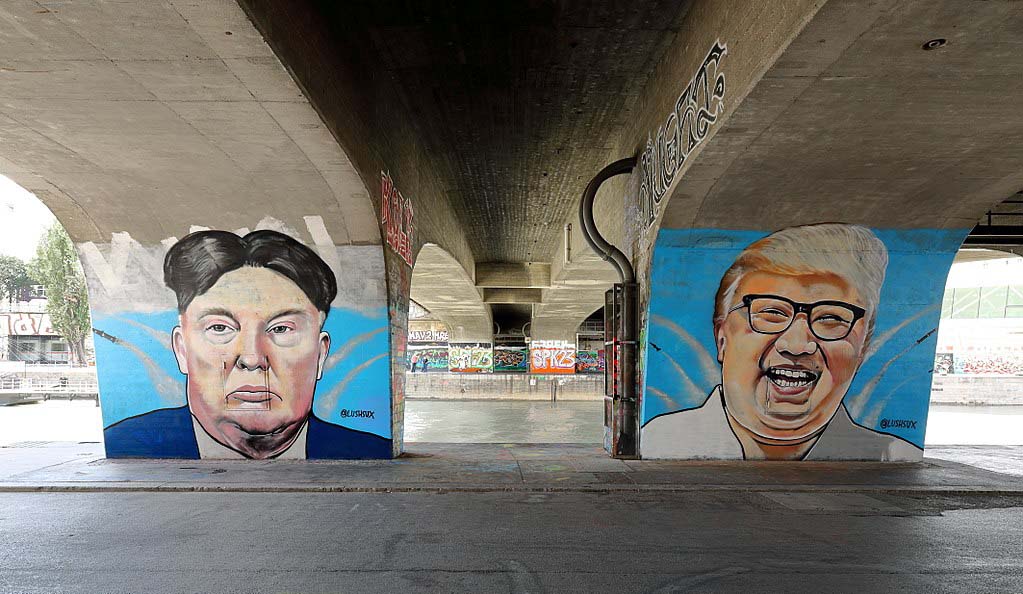The agreement to hold a meeting between the US President Donald Trump and the North Korean President Kim Jong-un has recently dominated the world’s headlines. Before March 2018 the headlines were occupied by alarming news suggesting the possibility of military conflict and an escalation of a latent conventional conflict into an open nuclear one. The balance of evidence seemed to point to the risk of escalation provoked by North Korean nuclear and missile tests and by President Trump’s strongly-worded statements. Indeed, most analysis of the Korean conflict has focused on such risks, ignoring the possibility that other non-military means –and not just the lever of economic sanctions– might have positive effects. To the contrary, the Elcano Royal Institute –in addition to analysing the significance of ongoing events for the delicate balance of regional stability– has also maintained that the situation could be contained through discrete bilateral diplomacy between the US and North Korea.
After ruling out other measures for stabilising the conflict as unviable, a May 2017 ARI on how to avoid a military conflict on the Korean peninsula indicated that ‘given the situation, even a sub-optimum accord that seeks to freeze, rather than to eliminate, nuclear weapons is preferable to the continued status quo in which North Korea continues to develop its nuclear and missile delivery capacities at a rapid pace’. This conclusion was consistent with the arguments deriving from a research visit to Pyongyang in September 2016, and later confirmed by researchers and think-tank analysts from Asia and Europe at a seminar in June 2017 at the Elcano Royal Institute. The publication synthesising the conclusions reached at this seminar, ‘Windows of opportunity in the Korean peninsula’, reiterates that ‘the most realistic option to face the DPRK nuclear crisis is to reopen a process of political dialogue’ and that ‘the best and most plausible scenario would be the opening up of negotiations based on a North Korean moratorium on nuclear and missile tests’.
This conclusion differed substantially from the mainstream analysis of the strategic community at the time, but it was based on solid objective arguments setting it apart from more speculative analysis and which time has continued to confirm. The Institute’s line of argument is that once the unacceptable risks of a military option, the insufficiency of economic sanctions and the impossibility of a dialogue that could lead to complete, verifiable and irreversible denuclearisation of North Korean are recognised, the most realistic option is to start a new diplomatic dialogue without any preconditions unacceptable to Pyongyang with the aim of searching for pragmatic agreements beneficial to all sides involved and that can contribute to regional stability.
As indicated in these analyses, the crisis demands an urgent diplomatic response to avoid the escalation that would come as soon as Pyongyang demonstrates to the world its capacity to hit the West Coast of the US with nuclear intercontinental ballistic missiles; and, in addition, a negotiation framework is needed that would allow for the current nuclear levels to be later reduced, ideally even to achieve full, verifiable and irreversible nuclear disarmament of North Korea.
“Moon has always demonstrated his willingness to dialogue with Pyongyang, but without falling into the two great policy traps of the Sunshine Policy (1998-2008)”
Although he has been in office for less than 10 months, the South Korean President, Moon Jae-in, seems to understand the situation perfectly, and he has become a leading protagonist in the attempt at a diplomatic solution between the US and North Korea. In contrast with his two predecessors, Moon has always demonstrated his willingness to dialogue with Pyongyang, but without falling into the two great policy traps of the diplomatic strategy towards Pyongyang known as the Sunshine Policy (1998-2008), which was not coordinated with the US and which rewarded North Korea simply for agreeing to talk.
The South Korean leader took advantage of the window of opportunity opened up by Kim Jong-un’s New Year’s address expressing North Korea’s desire to send a delegation to participate in the Winter Olympic Games at Pyeongchang. The subsequent conversations not only realised this possibility, in the form of a joint Korean delegation, but also allowed a high level North Korean delegation to visit the South during the games. Kim Yong-nam, the official, formal North Korean head of state, and Kim Yo-jong, the sister and confident of Kim Jong-un, were among the North Korean delegation, and they invited President Moon to hold the first inter-Korean summit in more than a decade and the first in which Kim Jong-un would participate. The South Korean President accepted this offer on the condition that it would be accompanied by a parallel process of contact between the US and North Korea. This bore fruit: during a meeting held in Pyongyang at the beginning of March with a South Korean delegation, Kim Jong-un expressed his desire to meet Trump and his commitment to stop all nuclear and missile tests, and to accept joint military exercises between the US and South Korea, during such negotiations. A few days later the same South Korean delegation visited the White House to deliver Pyongyang’s message and secured President Trump’s green light for a possible summit meeting with Kim during the upcoming month of May.
Although analysts insist on belittling their rationality, Trump and Kim are pursuing their own logic even if it does not coincide with that of most of the brainy strategic community. They both have a personalist idea of leadership which does not fit into the conventional analytical frames of national security advisers, and they believe they must take the initiative to lead their peoples to great moments and that the hour to do so has arrived. Kim has accelerated a process that has allowed him to negotiate from a position of strength and to prompt gestures of rapprochement, first from the leaders of South Korea and now, possibly, from his US counterpart. For his part, Trump has no military solution that can stop the will of the North to acquire superior nuclear warhead delivery capacity, but he believes that his policy of maximum pressure has now sufficiently weakened their economy to make the North Koreans willing to make important concessions. Both sides would like to leave such a meeting with some immediate result with which to reaffirm their personal leadership; and neither has anything to lose since they can always blame the other side for any failure.
“It should be remembered that this would be the first time in history that a standing US President has met the principal North Korean leader”
The announcement has been received with optimism and hope by most of the international community. It is widely seen as a singular opportunity to advance toward a solution to this conflict which has threatened the security of East Asia for decades and become a major threat to the global nuclear non-proliferation regime. It should be remembered that this would be the first time in history that a standing US President has met the principal North Korean leader. However, some factors suggest that optimism should be moderated. The meeting might not take place, or it could yield little practical results, like previous rounds of negotiations; or it could be a complete failure that leaves us closer than ever to a military conflict.
North Korea has already made its first concessions, freezing its nuclear and missile testing and accepting joint military exercises between the US and South Korea. In addition, other gestures –like releasing the three US citizens detained in North Korea (along with a Canadian and Australian in the same situation) or moving towards a resolution of the case of the Japanese citizens kidnapped between 1977 and 1983– might be expected before or during an eventual Trump-Kim summit.
It is typical of the process of diplomatic negotiation that the summits between the highest-level authorities are the culmination points of a long undertaking of previous work in which the parties negotiate the differences in their positions. However, that this is not the case in this instance was made clear by the statements by Rex Tillerson from Ethiopia –just hours before Trump announced the upcoming meeting with Kim– that the US was ‘very far’ from starting negotiations with North Korea. We should not expect, therefore, that the meeting between the two leaders necessarily produces an agreement, which at this stage, at least, appears premature.
In the many declarations of the Trump Administration on the North Korean crisis, the emphasis has been placed on what the US was not willing do to in order to negotiate with Pyongyang, and not on what it might be willing to offer, beyond a simple subsequent withdrawal of sanctions, in exchange for the de-nuclearization of North Korea. Such a diplomatic offer limited to lifting sanctions is apparently not enough to produce any kind of agreement. Trump will have to risk something more if he wants to move towards a solution to the crisis. He will need to offer some form of security guarantees. These might range from the reduction of the joint military forces with South Korea, to the signing of a peace treaty, to the normalisation of diplomatic relations, or even to the withdrawal –if still improbable– of US troops from the Korean peninsula. Different kinds of economic and humanitarian assistance could be added to the offer to help stimulate economic development in a country that has languished for years due to many factors, and not just international sanctions.
Therefore, the best news that we can hope for is that the Trump-Kim summit does finally take place and that it serves as a new call to an essential negotiation process capable of achieving concrete results in terms of nuclear non-proliferation goals and East Asian stability. On the other hand, an abject failure of such a meeting could push Kim to re-double his efforts to develop his country’s nuclear missile programme and provoke Trump to consider the military option as the only possible way to prevent the US from falling within North Korea’s nuclear range. For this reason, we hope that both leaders are up to the task and that they do not bring us any closer to a terrible military conflict.




